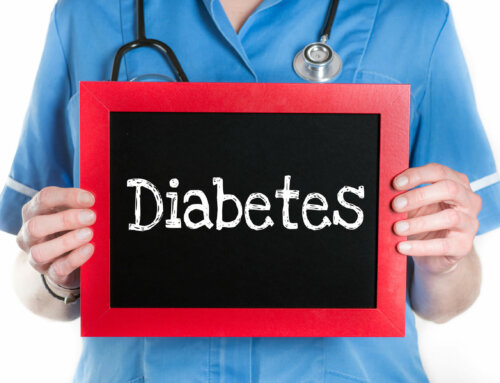Diabetes Technology Trends
2018 marks another exciting year of news in the world of diabetes research and diabetes care. There were several yearly updates in all aspects of diabetes diagnosis, treatment and prevention by many professional diabetes expert organizations. These include yearly meetings and presentations held by The American Association of Clinical Endocrinologists (AACE), in Boston in May 2018, as well as The American Association of Diabetes Educators (AADE) in Baltimore, August 2018. Discussions and information shared were for all types of diabetes – type 1, type 2 and gestational diabetes. The general statement made during the professional meetings was, “there is a strong focus on technology with a greater need on access and patient affordability”.
Let’s examine some of the expert diabetes highlights from 2018 and beyond and what they mean to you.
New Diabetes Products and Services:
One Drop
One Drop is a blood glucose meter with coaching for patients with type 2 diabetes not taking insulin. It has an automated decision support feature where patients can predict glucose trends based on their previous 12-hour glucose logged data. This will be available in the second half of 2018. Eventually, it will be available for patients on insulin as well.
Whisk
Whisk is an artificial intelligence nutrition platform. It helps users put in diet preferences and then makes recipe recommendations and grocery lists and then adds items to an online grocery shopping cart based on personal preferences. Whisk can integrate into Ascensia’s Contour Diabetes App, which allows blood sugar data to be used to tailor food recommendations and more.
Eversense
Eversense is the first 90-day implantable continuous glucose monitor (CGM) which was recently approved by the FDA for adults and soon will be approved for adolescents. It is a pill sized sensor which is implanted in the upper arm for 90 days. This removes the need for frequent sensor insertions. The body transmitter is in a different site. Some of its features are:
- display of glucose readings on mobile devices
- has hypoglycemia and hyperglycemia alarms
- longer sensor duration and is implantable
The Eversense does require two finger stick calibrations per day and is not approved for dosing insulin. The alarms or alerts come in “body vibration” which is good for those who have hearing deficits or vision problems.
Dexcom 6 CGM
Dexcom was founded in 1999, and the new Dexcom G6 Sensors were granted market approval in March 2018 for children age 2 or older and adults with diabetes. It can be used as a stand-alone CGM or integrated into automated insulin dosing.
Dexcom G6 CGM features:
- Easy to use push button applicator– 76% of pediatric patients did not feel insertion of sensor
- No finger sticks are necessary which is common with other CGM brands. Of course, if glucose readings do not match physical signs and symptoms, perform a finger stick
- More accurate readings with no interference from other medications
- Integrates with insulin pumps and blood glucose meters
- 28% smaller design and easy to place under clothes
- Alert feature which signals hypoglycemia before it happens
- Gives trends to show where blood sugars are heading, so you can act fast
- 10-day sensor wear is 43% longer than previous Dexcom sensors
- Automatically sends blood sugar readings to Dexcom receiver or smartphone device every 5 minutes
- Share mobile App allows for sharing glucose information with up to 5 other people
- Customized/personalized alarms and alerts. It immediately alerts the wearer of pending dangerously high or low blood sugars. “Urgent low soon” alarm occurs 15 minutes prior to a potential low glucose that is dropping rapidly. Treatment can now occur before the event.
- Is water resistant
- Earned the trust and respect of the diabetes research community all around the world
Guardian Connect CGM/Sugar IQ
The newly released Medtronic’s Guardian Connect CGM offers Sugar IQ which is an artificial intelligence (IBM Watson) powered companion used only with Apple devices. It is like having a, “personal diabetes assistant” and is available to those taking multiple daily insulin shots, not those using an insulin pump.
- The Guardian Sensor 3 is worn for up to 7 days and works together with a slim Bluetooth transmitter
- It helps patients keep, “time in range-70-180mg/dl” which really allows for reduced hyperglycemia and hypoglycemia by outsmarting highs and lows before they happen
- Data shows a daily summary of glucose trends and Glycemic Assist shows how glucose responds to challenging foods and different physical activities
- Having a controlled A1C or 3-month average may include extreme highs and lows and evidence now shows, “spending time in range is more important and may be achieved with help from Sugar IQ”
Peer Group Support
There are multiple online or active groups of college students, women, Spanish speaking, parents of newly diagnosed children, people with type 1 diabetes, the elderly and other specific target groups, taking part in discussions about diabetes.
Benefits of Peer Support Groups
- These groups help patients stay informed, minimize isolation and are available 24/7
- The groups require no travel, share information about stress and coping mechanisms, vent frustrations and address personal challenges
- Support groups provide tools and activities, offer practical insights and advocate for diabetes causes and concerns
- Some popular sites are: PepSquad, TuDiabetes.org, MyGlu.org, TypeOneNation.org and Facebook which offers blogs and group experiences
- If you are not an “online person”, look for local support groups through your doctor’s office, local hospital, community center, library, diabetes educator, local YMCA or start your own support/information group. Many times, you will find a health care professional-dietitian, nurse, social worker, psychologist, pharmacist or diabetes educator who will volunteer their time and steer your group while offering accurate medical information. Discussion should follow with all patient participants. Find a local group, start a local group or get online.
The only drawback is you must watch for medical accuracy vs inaccuracy and realize there is NO substitution for professional medical advice. Always make decisions with the help of your health care provider.
Companion InPen System
The Companion InPen System was recently cleared by the FDA for patient use as a reusable insulin injector pen. It is an insulin pen which lasts one year, without recharging, that is integrated into a diabetes management App via Bluetooth. It is currently available for iPhone and planned for Android use in late 2018. The InPen System is approved for those over 12 years old and receiving multiple shots of daily insulin.
- The system gives information on glucose numbers, insulin amounts, meal data and offers information to providers, so they can also track your progress
- The InPen comes in pink, blue and grey and requires single-use, detachable and disposable needles, which are not included. Never share needles.
- It can be used with Novolog or Humalog U-100 3ml cartridges
- Insurance coverage varies so check with your physician and insurance company to see if this new product is covered and right for you
Calibra Bolus Insulin Delivery Patch
Called the “One Touch Via” this patch is supposed to launch in mid-2019 in US pharmacies. It is worn for 3 days and holds 200 units of bolus (rapid acting) insulin. The Insulin Delivery Patch is ultra slim and will deliver pre-meal time insulin conveniently. It can deliver 2 units of insulin at a time when pushing 2 separate buttons. It makes taking meal time insulin more discreet. It will be available for both type 1 and type 2 diabetes. The patch is mechanical, with no electronics, which makes it more economical and somewhat easier to operate.
Lesser known Diabetes Technology Products and services
Xultophy
Xultophy is a new combination injectable medication which combines basal insulin (Tresiba) and a GLP-1 (Victoza) to help control blood sugars in people with type 2 diabetes. This allows for fewer daily injections. Tresiba is a once a day, long acting basal insulin and Victoza is a GLP1 daily injection which increases insulin sensitivity and stimulates glucose uptake by the cells. Diet and exercise are still required for diabetes control. Xultophy is injected into the subcutaneous layer of fat with a short needle. It cannot be taken by patients who have had pancreatitis. Side effects may include respiratory symptoms, hypoglycemia, nausea and diarrhea. Ask your health care provider if this medication may be helpful to you.
SGLT-2 oral medication
These medications work by excreting excess sugar through the kidneys and presently had only been prescribed for type 2 diabetes. Recently, Farxiga, a SGLT-2, was given to patients with type 1 diabetes. The results were that they showed a greater reduction in A1C levels along with lower needs of insulin with less hypoglycemia. There was a higher incidence in diabetic ketoacidosis (DKA) in those with type 1 diabetes, taking Farxiga.
Qtern
Qtern is a new single pill combining Farxiga (SGLT-2) and Onglyza (Dpp4 inhibitor) taken by patients with type 2 diabetes. It offers similar results in lowering A1C levels compared to taking Lantus, a long acting insulin injection. This pill could possibly eliminate the need for a daily injection. Those taking Qtern also experienced less hypoglycemic events and offered more weight loss than Lantus insulin injections.
Afrezza
Afrezza is an inhaled bolus (rapid acting) insulin which has been around for several years and requires a prescription. It comes in powder form available in cartridges of 4/8/12 units of inhaled insulin. Afrezza should not be used by patients who have existing lung problems including COPD, lung infections, pneumonia, pulmonary fibrosis or asthma. In a recent study, Afrezza showed more time in blood sugar range-70-180mg/dl after meals than Novolog, a fasting acting bolus insulin injection. More research needs to be done. Talk to your doctor to see if this may be useful to you and used in place of insulin injections.
Metformin, Pioglitazone and Bydureon
These 2 pills and GLP1 injection are offered as a new combination therapy, early on, to newly diagnosed patients with type 2 diabetes. Metformin (pill) helps the liver produce less sugar. Pioglitazone (pill) decreases insulin resistance. Bydureon is a GLP1 injection which helps your body use what insulin you already have more efficiently. The patients A1C was still down to 6% (7% or below is acceptable to the ADA) 6 years later. They experienced less hypoglycemia than those on other drug combinations. It was a small study, but results are promising.
Apps
There are many new Apps to help make life with diabetes easier. MySugr, One Drop, Onduo all can help you with remote coaching. Mobile CGM Apps remove the need for CGM receivers and is seen with Dexcom G5 and G6, Guardian Connect, Freestyle LibreLink and Eversense. There are web Apps called Glooko and Tidepool which allow downloading information. Glooko is a subscription-based diabetes management platform to help connect food, activity and medications with blood sugars. Tidepool is a free open diabetes platform for type 1 diabetes and their care teams. There are many more to come.
The endocrine professional organizations yearly meetings discussed many new products, applications, medications and information for you and your health care professional. Now you and your physician should explore some of the latest technology for people with diabetes.












Leave A Comment